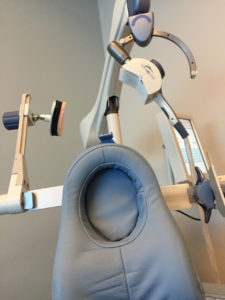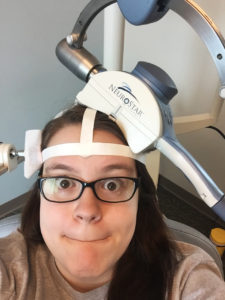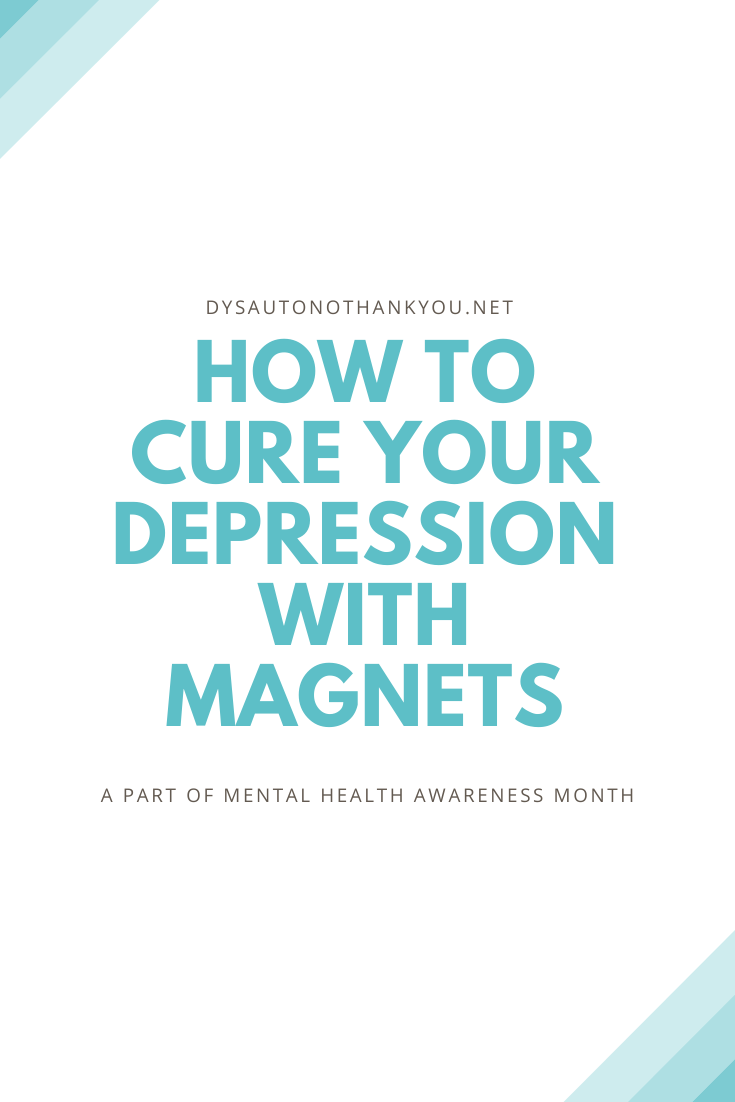Depression seems like it should be so easy to cure.
- Go to therapy.
- Maybe take anti-depressants.
- Exercise, eat well and hydrate.
- Think happy thoughts and avoid things that make you miserable.
Boom! Depression cured. It’s so simple.
Except it’s not that simple. It’s never that simple. Because depression is a monster.
I followed this routine for 12 years with occasional periods of success. Those periods were marked by success in school, new friendships, personal projects and laughter.
But overall, I had a lot of falls in my mental health. Over and over again.
Each time I would stumble and fall, my therapist, psychiatrist and I would consult and we’d create a new plan of attack. How can we approach this depression differently? What makes this situation different? What have we learned in the past that we can use now?
But by the time I entered my 20s, I was exhausted with picking myself up after these falls. Not only was I picking myself up, I was picking up over a decade of emotional baggage that I couldn’t shed no matter what I tried.
We considered different intensive treatment options over the years that ended up not working out for a myriad of different reasons. But in the fall of 2015, my psychiatrist proposed something new.
Transcranial Magnetic Stimulation. TMS.
He pitched it as a funky magnetic device they’d put on my head, my scalp would feel tingly, and afterwards my depression would be gone. It’d take a bunch of sessions but my depression would just go away after a while. Minimal to no side effects. The only catch was that my insurance might not cover it and it cost $15,000 out of pocket.
To which my psychiatrist added with a dejected look on his face, “I really wish you had $15,000 laying around somewhere.” (Don’t we all?)
We nervously sent in a request to our insurance and went around to my doctors to see what they thought.
As we learned more about TMS it seemed like the perfect procedure for me. It got my cardiologist’s approval—he wasn’t worried about any interference with my dysautonomia. My psychiatrist was excited about it, he couldn’t wait to see how effective it was. And my therapist loved how hopeful I was. She liked the science of it, she liked the promise of it, she liked my enthusiasm about it.
It took a few weeks to get insurance approval. I met all of their requirements:
- I had tried Cognitive Behavioral Therapy.
- I had tried four or more different psychiatric medications (there were specific rules about what types of medications they were, but I think I was on four anti-depressants at the time I submitted my request. I was more in the 25+ range of medications.)
- My psychiatrist believed I would benefit from TMS.
- The psychiatrist at the TMS practice believed I was a great candidate after reviewing my records and meeting with me.
The day I was approved by insurance, I cried so many tears of joy: this was happening. This was promising. This could be life changing. We’d start right after the new year.
*
TMS is the most bizarre medical procedure I’ve ever had.
-

this creepy chair will make you not depressed! You go into a room and get into a very interesting looking chair.
- They put a weird paper crown around your temple that velcros into the machine to hold your head in place. (I always thought it would be a really good base for a flower crown and considered taking some extras home and using it as such.) You put ear plugs in.
- They raise the chair up and lean you back.
- They put your head in place and align you with weird protractor looking tools that are attached to the chair.
- They bring down the coil/magnet and place it against your head.
- They bring down the counter pressure place it against the opposite side of your head to hold you in place and to make sure your neck doesn’t hurt from the weight of the magnet.
- They turn on the machine.
- It feels like a woodpecker is trying to get through your skull into your brain at first, then you get used to it. But nothing is touching your skull. It’s just magnetic pulses. It’s uncomfortable but not painful.
- For my depression treatments, it’s five seconds of tapping followed by 25 seconds of peace (repeat for about 40 minutes) on my left side of the head. For my anxiety treatments, it’s a constant tapping on my right side of the head. (Of course, everything will vary by patient, by doctor, by machine, by facility.)

Half way into my treatments, I met with my TMS psychiatrist and we decided to add in a second treatment (called bilateral treatments) every day for anxiety, because my symptoms of depression were getting better but my symptoms of anxiety were not. So every day, I had 40 minutes of !dundundundundundundundundun! followed by a break and repeat on the left side of my head and 40 minutes of a slow, !tap, tap, tap, tap! on the right side of my head.
(Above is a recording of a TMS treatment on the left side. It sounds like a machine gun, but it’s all magnetic pulses. No pain, just strange tapping feelings.)
(Above is my hand during one of my bilateral treatments on my right side for anxiety. My hands twitched a highly abnormal amount.)
I got to watch TV or listen to music during my treatments. I became friends with all of the technicians who would check in on me, ask me how I was, check to see that I wasn’t feeling too paralyzed while strapped into the chair and the machine.
I had almost all of my appointments (36 of them!) at the same time every day and fell into a comfortable routine. I’d watch reruns of Saturday Night Live on Vh1 and had a habit of laughing a little too hard during Weekend Update and would occasionally disrupt my placement in the machine—the machine would recognize that my head was no longer in the right place, sound an alarm, and the technicians would come back in, fix the positioning, and watch the rest of the segment with me because clearly, it was hilarious and worth watching.
*
TMS lifted the depression.
I started getting up a little earlier. I started making plans and schedules. I thought about things I wanted to do and took the steps to do them.
I was approaching problems exactly the way my therapist and I would practice in therapy. The negative voice that lived in my head was spending less time there. And when I was anxious, I had more energy to remedy the anxiety.
These positive steps started happening only two weeks into the six weeks of treatment. By the end of treatment, I felt better than ever. I felt like I was learning to walk on new legs—still nervous about this new life in recovery from depression, a little apprehensive about what post-depression life would be like, but ready.
At my final appointment, my psychiatrist in charge of my TMS gave me a few statistics to keep in mind.
- Due to the severity of my depression and how long I’d been living with it, I had a 70% chance of relapsing.
- But because of how successful TMS had been, I had a 90% chance of it working again if I got a second round of treatment.
I took those numbers to heart, repeating that 90% statistic every time I got nervous about relapse. I was high risk, but it was almost definite that I could get back to that amazing state of recovery again. We now knew what my brain required to get out of depression: it was TMS.
*
A month after TMS, (this March) I relapsed.
I was devastated. I was embarrassed, because it was so soon. I felt ashamed that it happened so quickly, as though it were somehow my fault. (I have since worked things out in therapy: obviously, it’s not my fault.)
I met with all of my doctors and we agreed that I should get back into TMS. Everyone agreed that TMS gave me relief like I’d never felt in 13 years and the severity of my depression just needs more intensive treatment. I needed a second round of treatment.
We sent the request into my insurance company and are currently in a battle with the appeals process because they deem it “medically unnecessary.” My insurance company is the only thing getting in the way of me and a cure for depression—because like most families, mine does not have $15,000 laying around to pay for this treatment. We use our money for things like food. And shelter. And paying for medical insurance that later screws us over.
I’m going to hold on to hope that the appeal will work out because I want to live life free of depression for longer than weeks at a time. I have an idea what I can be beyond my depression and it’s pretty great. I want to be be that productive, be that worry free, feel that light and think that clearly. I know that I deserve that. And somehow, it’s magnetic pulses on my brain that can give me that.
*
If you have any questions about TMS, please feel free to reach out, I’m happy to talk about my experience with it. And if you have any science based questions, hit up these resources:
More information about TMS

Question. I had a major (they are all major) TBI 16 years ago. It wiped most of my memories, except the really bad memories came back. The depression I have had sense I was a teenager was still their. My self hatred had exploded and is still a daily fight. Ive been in different antidepressants, only 1 worked, but when the Dr lowered the dose like the FDA later decided was best, it stopped working. Nothing has worked sense. 6 years later, Im wondering if TMI could work for me. I havet had a seizure in 8 years, and I no longer take seizure meds. Please help. My depression is a daily struggle and its fighting me daily not letting myself take my lifesaving prescriptions.
Hi Jenny! Thank you so my for reading—I am so, so terribly sorry for everything you’ve been through. I can only imagine the pain you’ve experienced. I don’t know a lot personally about TBIs—I can only speak about my own personal experiences. There is a small chance that a person could suffer a seizure as a side effect of TMS. I think the best possible thing for you would be to see if there is a TMS provider in your area and go in for a consultation. I went to Greenbrook TMS which now has locations across the country—I loved the people who worked there. https://www.greenbrooktms.com/
You could also reach out to your insurance company directly and see if they could locate a psychiatrist who administers TMS for you.
Sending you my best and warmest thoughts!
Hey! Thanks for writing this. Seriously. I’m wondering if this had any impact on your POTs symptoms? Did it help alleviate some symptoms? How was management of POTs while you did treatment?
I’m asking cause I’m starting to hypothesize that TMS might actually support dysautonomia treatment because of the rebalancing of parasympathetic & sympathetic pathways in the brain.
PS I’ve got depression & POTs & looking at getting TMS approved for myself
Hey Meytal!
I wouldn’t say that TMS impacted any of my POTS symptoms (and oh boy did we keep track) — but I do think the result of remission made a huge impact.
For the first few weeks of TMS, my techs would take my orthostatics before and after treatment to ensure I was OK. My blood pressure was always the same and my heart rate usually went down after TMS, but that’s a result of sitting for the course of treatment vs when I was moving around to get to the treatment room when they would take my beginning HR.
However, because my quality of life improved because TMS brought me into remission from my depression, I was more motivated to take care of myself and my POTS symptoms–for example, exercising daily, trying to seek out more nutritious foods (trying to be the operative word there haha).
Hope that makes sense!!